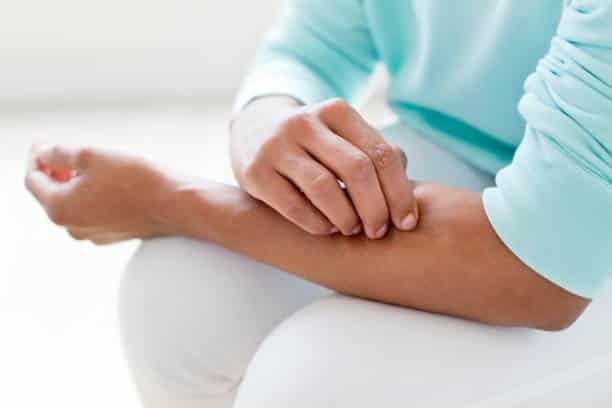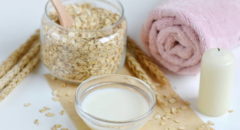
With studies showing that one in three people in the United States will develop shingles in their lifetime, knowing how serious this viral infection is and how it can affect you is important.
What are shingles?
Also known as “herpes zoster,” shingles are non-life-threatening and the reactivation of the chickenpox virus in the body.
The cause for the reactivation is unknown, but there are certain triggers for shingles, including stress.
What does shingles look like?
A shingle is a painful rash that appears as a stripe of blisters on the trunk of the body.
The blistering rash can develop along a nerve path in such areas as the right or left side of the body or face, the arms, the head (including the eyes and ears), the thighs, or the torso and chest (considered the most common areas).
RELATED: Shingles – The Itch You Don’t Want to Scratch
Are shingles contagious?
Shingles are considered not to be contagious but in cases where the person has active shingles, shingles can spread the virus when the rash is in its blistering phase.
Shingles symptoms
Early symptoms of shingles, which you can feel several days before a rash appears, include:
- Abnormal skin sensations (more common)
- Burning
- Feeling unwell
- Fever
- Headache
- Intolerance to light
- Itching
- Tingling mixed with pain in the area where the rash may appear (more common)
Stages of shingles
With the rash, it can form within a couple of days, then progress to blisters, and finally crust over.
The time the rash ends up lasting can range from seven to 10 days. It should be completely healed within two to four weeks.
Treatment for shingles
Receiving a chickenpox vaccine in childhood or a shingles vaccine in adulthood helps to minimize the risk of shingles.
Pain relief and antiviral medications, such as valacyclovir and acyclovir, are treatment options for shingles.
RELATED: Easy Home Remedies for Shingles
Home remedies for shingles
The following natural remedies, which may or may not work for everyone, can help with the discomfort and pain of shingles:
- Baking soda
- Cold or cool compress
- Cornstarch paste
- Dietary remedies
- Healing baths – such as an oatmeal bath for itching
- Herbal or homeopathic remedies
- Soothing creams and lotions – such as calamine lotion
- Witch hazel
When to talk to a doctor
Because there isn’t a cure for shingles, if you have them, your doctor can prescribe medication to help reduce symptoms or shorten the duration.
Foods to avoid during a shingles attack
You will want to avoid foods that can impair your body’s immune system to shorten a shingles outbreak. One food intake example includes alcohol.
The following foods contain high glycemic carbohydrates, which can increase inflammation and compromise the immune system:
- Baked goods
- Ice cream
- Sugary cereals
- Sugary drinks
- Sugary sauces
- Sweets and candies
- White bread
- White rice
The following examples of food are highly processed foods that should also be avoided:
- Breads and crackers (high-fat and low-fiber)
- Cakes, cookies, pastries, and pies
- Deep-fried foods
- High-fat snack foods
- Sugary energy drinks and sodas
- Sweetened cereals
To help your immune system, keep in mind that there are foods that you may want to incorporate during a shingles outbreak.
They include foods that are high in vitamins A, B12, C, and E, as well as lysine and zinc.
Foods that fall under complex carbohydrates, which can help lower inflammation, include:
- Barley
- Brown rice
- Quinoa
- Sweet potato
- Whole grain bread, couscous, oats, and pasta
Essential oils for shingles
Capsaicin, geranium, and peppermint oils are doctor-recommended essential oils that work well with doctor-prescribed medications to treat shingles.
A few drops of oils such as geranium, lemon, or thyme mixed into a tablespoon of coconut oil can be applied to your blisters.
Final Words
You may not be thrilled to learn that shingles do not have a cure, but keep these home and natural remedies in mind as more research continues to be conducted in connection to shingles.









